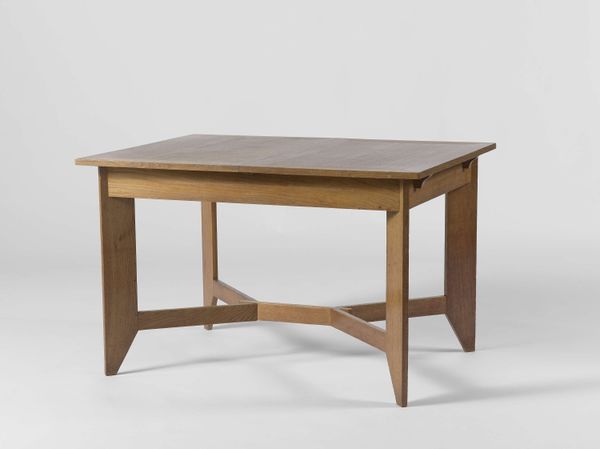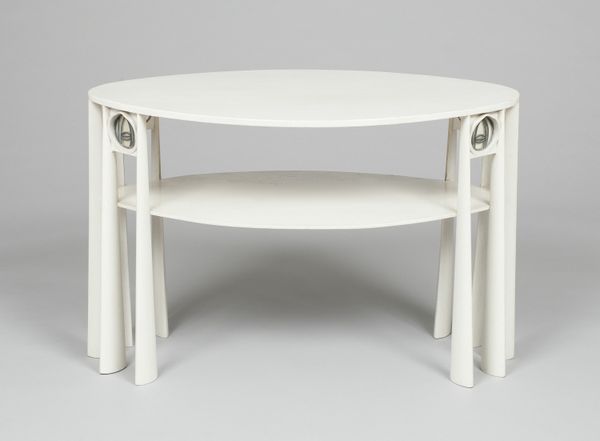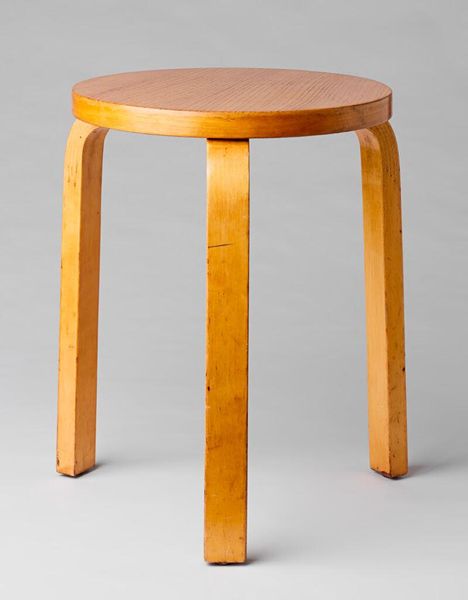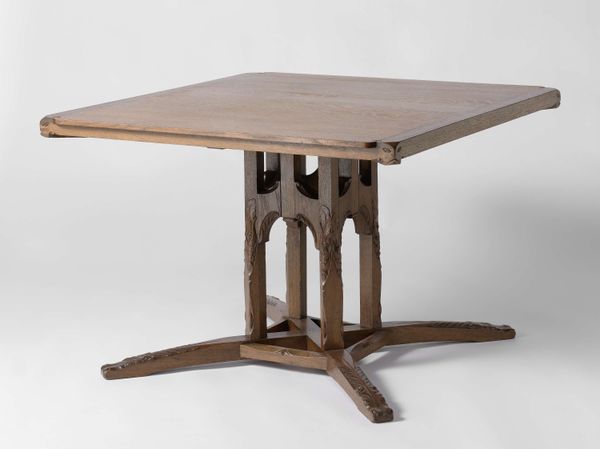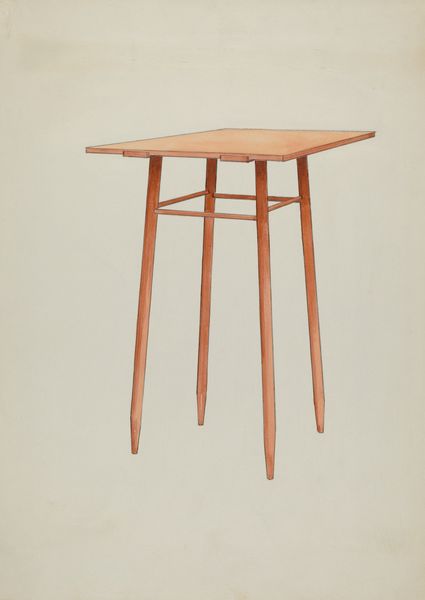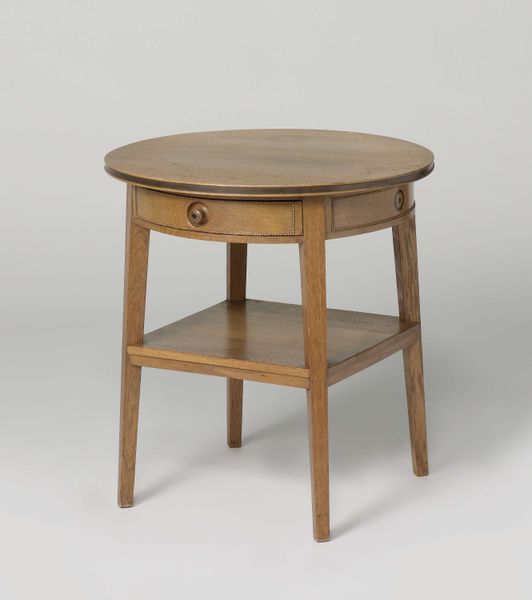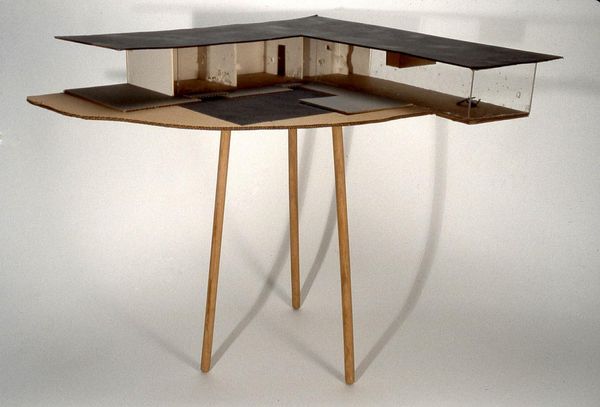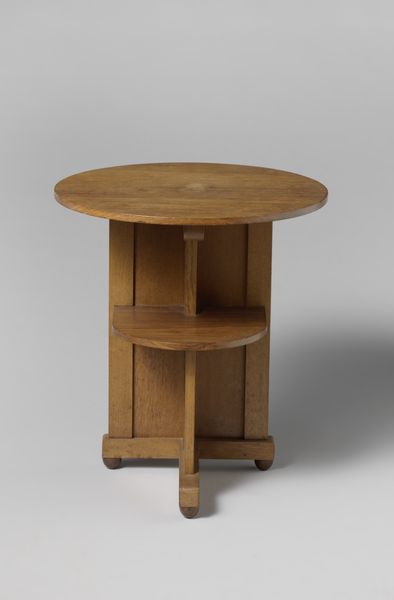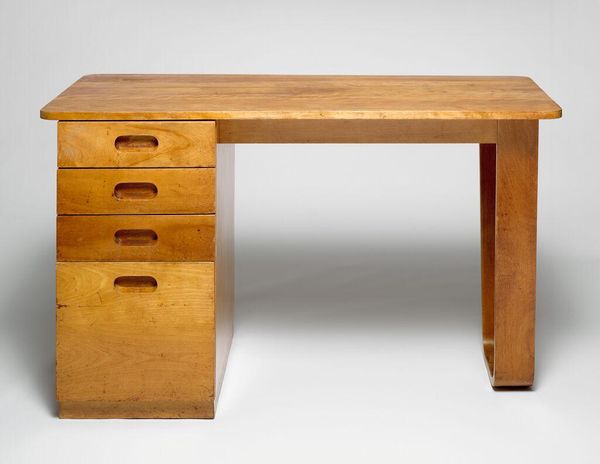
wood
#
table
#
wood
#
decorative-art
Dimensions: 71.7 × 101.2 × 220 cm (28 1/8 × 39 7/8 × 48 in.)
Copyright: Public Domain
Curator: The Art Institute of Chicago holds this remarkable “Table (part of a set)" conceived around 1885 by Louis Comfort Tiffany. What’s grabbing your attention here? Editor: The table has a sort of skeletal quality, all simplified forms and pale, almost bleached wood. There is a curious marriage of refined craftsmanship with what appears like raw structural honesty. Curator: That raw structural honesty intrigues me as well. It challenges traditional notions of high design by overtly displaying its method of construction, even flaunting the rivets. To me, the visual weight and the repeated geometric patterns feel almost totemic. Editor: Absolutely. The materiality speaks volumes; the wood construction, the visible joinery…it all signals a move away from ornamentation. Tiffany seems to be making a deliberate choice to emphasize process. Are those darkened rivet heads intentional, or part of natural ageing? Curator: I believe that the darkened heads play an important role in articulating shadow and rhythm. Think about the American Aesthetic Movement in which he actively took part, in relation to design principles and the burgeoning Arts and Crafts movement at the time. We tend to recall the grand stained-glass and leaded windows, mosaics, but here’s a domestic piece offering symbolic visual language through geometry and functionality. Editor: It's interesting to consider how an artisan renowned for such opulence and color would create something with such stark utilitarian overtones. You mention design principles; to my eye it feels more functional than traditionally aesthetically-driven—perhaps to encourage reflection on domestic activity or the craft movement itself? Curator: Possibly both, indeed! It underscores how complex cultural ideals were around production, the aesthetic possibilities in construction, and utility in the home, circa late 19th century. Editor: For me, looking closely reveals not just an object but a historical artifact, embedded with clues about labour, artistry, and the evolving perception of beauty. Curator: For me, I recognize those symbols speaking from the past which prompt us to consider function, but also something deeper around design and social intention.
Comments
No comments
Be the first to comment and join the conversation on the ultimate creative platform.

